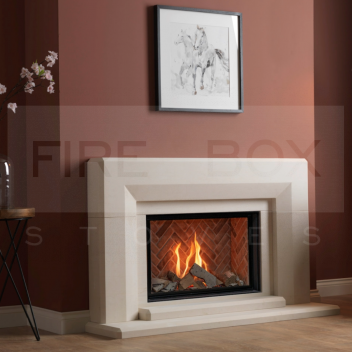Technical Details
| Product Title | Infinity 780FL Mk2 CF Gas Fire, Herringbone Brick Liner |
|---|---|
| Product Keyword | Infinity 780FL, Mk2 CF Gas Fire, Herringbone, Brick Liner, Fireplace |
| Energy Efficiency | D |
| Output (Nominal) | 4.8kW |
| Output (Maximum) | 6.6kW |
| Fuel | Gas - NG |
| Height | 605mm |
| Width | 780mm |
| Depth | 277mm |
| Nominal Output (Range) | 3kW - 5kW |
| Width (Range) | 700mm - 800mm |
| Nett Efficiency (%) | 81% |
| Style | Modern |
| Chimney Type | Class 1 & 2 |
| Height (Range) | 600mm - 700mm |
Product Description
Infinity 780FL Mk2 CF Gas Fire with Herringbone Brick Liner
Experience the ultimate in home comfort with the Infinity 780FL Mk2 CF Gas Fire, enhanced by an elegant Herringbone Brick Liner. This premium gas fire offers both high performance and a stunning visual addition to your home.
- High-quality glass front for optimal viewing and efficiency
- Stylish Herringbone Brick Liner for a classic fireplace look
- Advanced convection system for increased heat distribution
- Conventional flue design compatible with most existing chimneys
- User-friendly control options for easy operation
- Energy-efficient design to help reduce heating bills
- Customizable fuel bed and flame intensity
- Sealed combustion unit for safety and comfort
- High heat output for warming larger spaces effectively
- Designed and manufactured by an established and reputable company
File Downloads
Reviews
Gas Fires > Hole in the Wall Gas Fires

Hole in the wall Gas Fires
Here you will find our range of sleek and contemporary hole in the wall gas fires, perfect for homes where floor space is limited but the need for an additional heat source is required. These gas fires are available in a range of different sizes, depending on wall space available, and are also available with different outputs and finishes (such as brushed steel or chrome), depending on the size of room required to heat and the interior décor to match. These gas fires can be installed using either a balanced or conventional flue system- depending on the type of gas fire to be installed and can either be installed into an existing chimney breast or into a false wall or cavity. These gas fires are a very versatile way of creating a little additional heat for a space and are great for creating a beautiful focal point in any room. Some are available as double sided models in portrait or landscape design- perfect for large open plan rooms which may require a structure to help divide a space whilst also creating that ‘wow factor’.





